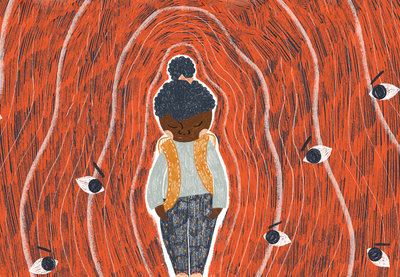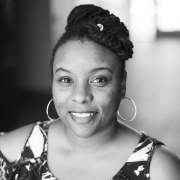The events of a troubling summer have reminded us all about the importance of affirming Black Lives Matter in schools. But acknowledging Black students and celebrating their culture isn’t enough. Anti-racist educators are pushing their schools to respond not through vague statements or gestures but with actionable steps toward dismantling systems that harm Black students. As a first step, educators must examine how whiteness operates—and is weaponized—in schools.
In late May, on the day news broke of George Floyd’s murder, a different video was receiving widespread national attention. In it, a white New York City woman calls 911 on a Black man as the two stand, yards apart, in a secluded section of Central Park.
The man, Christian Cooper, had insisted that she put a leash on her dog, per posted rules. The woman responded with aggression. And, understanding how minor disputes have led to Black people’s deaths, the man had begun recording the interaction.
“Unfortunately, we live in an era with things like Ahmaud Arbery, where Black men are seen as targets,” Cooper said in a CNN interview. “This woman thought she could exploit that to her advantage, and I wasn’t having it.”
He had good reason to be concerned.
“I’m going to tell them there’s an African American man threatening my life,” she says.
In the video, the woman’s tone goes from calm to frightened in a matter of seconds. She mentions twice to the 911 dispatcher that an “African American man” is threatening her and her dog. Her voice turns panicky.
“Please send the cops immediately!”
Unpacking the Pattern
Typically, the weaponization of whiteness happens this way: There is a demonstrated sense of entitlement, anger and a need for retaliation, feigned fear and, finally, white fragility.
It’s easy to recognize this pattern when it’s caught on video. We can observe for ourselves racial slurs, exaggerated fear and the privilege of whiteness forcefully taking up space. But when we publicly shame white people caught on video or demand severe penalties for their transgressions, we are individualizing racism rather than seeing how it can easily manifest in any white person because of how whiteness works in our society.
Calling the police ... actually puts the safety of our Black and Latinx students at risk.
White supremacist or anti-Black attitudes don’t belong to only one ideology, one political party or one particular geographical location. These attitudes exist across different regions, socio-economic classes, income levels, education groups and political affiliations. Since both anti-Blackness and white supremacy are baked into our country’s foundation, they often play out in our daily lives.
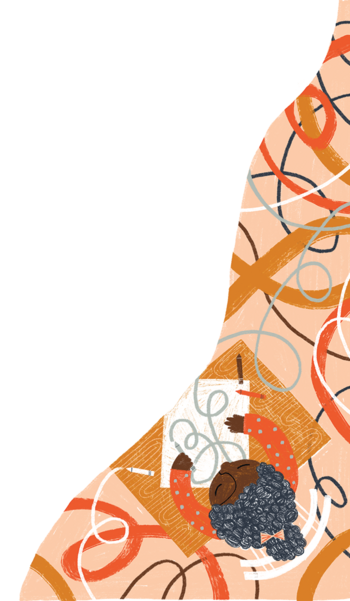
And just as all white people have the ability to weaponize their whiteness, all Black people can be harmed by it. Black students aren’t exempt. Weaponizing whiteness happens in schools every day.
Entitlement to Power and Challenges to Authority
Educators recognize when their authority is being tested and sometimes react in counterproductive ways.
“To me, [the weaponization of whiteness in schools] describes the way that minor issues—like a student coming to class late or cutting class—end up spiraling into more serious disciplinary issues that can have dire consequences for students,” explains Charlie McGeehan. A humanities teacher and founding member of Building Anti-Racist White Educators, McGeehan works with predominantly Black and Latinx students in his Philadelphia high school. As a white man, he says, the weaponization of whiteness is something he is consciously fighting in his own practice.
“I have to actively resist the urge to maintain power or control in my classroom, and especially to resist the anger that can bubble up in me when that control is called into question,” he says. “I actively work against these impulses in my practice—but even after years of doing this, it still takes work.”
Studies show that when educators perceive challenges to their power, they disproportionately view Black students as the source. In 2016, research from the Yale Child Study Center determined that, as early as preschool, educators tend to police Black students’ responses to their authority. They perceive Black students as exhibiting more “challenging behavior”—including “willful defiance,” “insubordination” and “disrespect”—than their non-Black peers.
In part, this may be due to the “adultification” of Black children, the well-established tendency for non-Black people to assume Black children are older than they actually are. Black boys, in particular, are seen as four and five years older than they are, according to a 2014 article published by the American Psychological Association.
In 2017, research from Georgetown Law’s Center on Poverty and Inequality confirmed that Black girls are also viewed as older than they are, and they are less protected and are punished more severely in school than white girls. Two years later, the Center expanded on their work, synthesizing their findings and providing firsthand accounts from Black girls and women. One key takeaway was that adultification bias led to “harsher treatment and higher standards for Black girls in schools.”
Their 2019 report includes firsthand accounts from Black girls and young women who participated in a focus group about their interactions with educators.
“Like, most times when you try to, like, defend yourself, they see how you’re talking back,” one person recounts. “And then, they’ll be like, ‘There’s consequences.’ And they’ll be like, ‘Oh, so they get a detention; get a suspension.’ They always feel like you’re talking back, but you’re really not. You’re just trying to defend, like get your side across.”
These assumptions about age and maturity have real, severe consequences. Speaking with TT in 2019, David Johns, an educator and executive director of the National Black Justice Coalition, noted that, too often, Black children aren’t allowed to just be children.
“It’s incredibly important for parents, family members and educators to protect the ability for our babies just to be babies—to laugh, to make mistakes, to color outside of the lines, to create things with blocks that don’t make sense to those of us who have forgotten how to dream,” Johns says. “Too often we snatch them from Black kids in ways that are unfair and undeserved.”
Anger and Retaliation
In viral videos, when a Black person challenges a white person’s sense of authority, the white person sometimes becomes physically aggressive. Similar responses happen in schools. We’ve described numerous times in our monthly “Hate at School” reports when educators reacted violently against Black students who challenge their authority. Whether they pulled students’ hair or called the police, it always led to more harm for the student.
When a white person calls the police on a Black person for no rational reason, they display a sense of entitlement. The caller signals that they belong in that space and the Black person does not—and they have the authority to police that person. Throughout the spring and summer months, there was no shortage of these spectacles caught on video.
We saw white people manufacturing distress to justify calling the police on Black people doing benign things such as working out at a gym, sitting on a park bench or relaxing at a hotel pool.
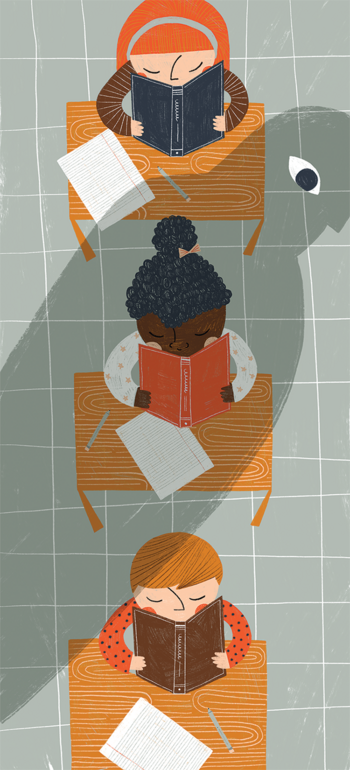
Similar responses happen in schools. We’ve long known that Black and Latinx students are more likely to receive official disciplinary action—and harsher action—than their white peers.
“I have witnessed students being penalized for dress code violations, ‘getting an attitude’ with a teacher, fighting, arriving late too many times and ‘seeming high on something,’” says Alicia Oglesby, a Black high school counselor and co-author of Interrupting Racism: Equity and Social Justice in School Counseling.
“These practices were typical at a majority Black public charter school where I’ve worked,” she explains. “These same behaviors occurred at a majority white private school where I’ve worked, but no suspension was given; different school, different rules, but it is not coincidental that a majority white school is not given such harsh consequences.”
One common way educators retaliate against Black students is by calling a school resource officer to their classroom. Educators surely know that there is a possibility the situation could escalate quickly—we’ve seen it happen too many times. But data shows this response may be more pervasive than we’d like to think. While Black students made up 15.4 percent of students during the 2015-2016 school year, they made up 31 percent of referrals to law enforcement, according to the most current data from the U.S. Department of Education’s Office for Civil Rights, released in 2018.
Oglesby says that enlisting the help of police or other authority figures instead of addressing issues of distrust, poor classroom culture or negative relationships is a “lazy aggression.”
“I think [calling in a school resource officer] completely undermines the relationship between an educator and students,” McGeehan agrees. “I am also realizing more and more that calling the police, even when they are ‘school police,’ actually puts the safety of our Black and Latinx students at risk, rather than protecting them.”
The Role of Fear and White Fragility
It’s imperative that white female educators, especially, recognize this pattern and actively work with Black students so that they react more thoughtfully to issues that come up.
“The white female teachers who are effective in collaborating with Black students are not fearful of Black people and are willing to listen to, hear and problem-solve with Black students,” Oglesby says. “The white female teachers who are effective do not view SROs as a necessary intervention for any reason.”
Her focus on female teachers isn’t incidental—the impact of calling the police is amplified by the intersections of race and gender. The viral Central Park video shows how: Viewers quickly commented that the woman’s behavior was reminiscent of the Jim Crow-era rhetoric white women used when they made unsubstantiated accusations against Black men, often leading to lynchings.
A central tenet of white supremacy—then and now—is that white women must be protected from danger, real or imagined, often with violence. So we can’t ignore the fact that white women dominate the field of education. They make up more than 60 percent of U.S. public school teachers.
When white women educators call SROs and say they are afraid of their Black students, they are recreating the dynamics that were used as excuses for racial terror.
One white female principal in Houston showed she understood this very well in a discussion with three staff members about a Black student with special needs who often ran from class. “We won’t chase him,” she reportedly said. “We will call the police and tell them he has a gun so they can come faster.”
When white women educators call the police on Black students for arbitrary reasons, they are calling up that history of racial terror, whether or not they intend to cause harm. The intent doesn’t matter.
“The role of intention is insignificant in student discipline, particularly when it does not match the impact on the student’s life,” Oglesby explains.
While many white educators want to believe that race plays no role in their interactions with students, Oglesby notes that “when a white teacher can say she doesn’t see race when she sends students to discipline, she is exempting herself from being held accountable for her racist behaviors.”
When white educators refuse to admit or understand their role in weaponizing whiteness, when they insist that they didn’t mean any harm or re-center themselves as victims, they don’t just prevent a reparation of the harm that’s occurred. They inflict further damage.
“I’ve witnessed white women state that they felt afraid of a black male student,” Oglesby recounts. “I’ve seen white female teachers leave a classroom visibly upset because ‘students were picking on her,’ even though she failed to build trusting relationships with those students,” she says. “In each of these situations, students served in-school suspensions for getting angry and calling the teachers out.”
In the Philadelphia education blog Philly’s 7th Ward, Black teachers recounted how white female teachers in particular use tears to gain sympathy or further assert their power. One explained: “When white women cry, there is a villain somewhere in the white imagination. History has viewed white women as prized possessions to be protected, so their tears have represented danger, terror and death for Black people.”
Repeating History, Lasting Impact
Black people may not be surprised by the centuries-old tactic of weaponizing whiteness, but that doesn’t make it less traumatizing. White people may assume that someone who hasn’t committed a crime shouldn’t worry when the police are called on them, but that assumption ignores history and an insidious system that hands out justice disproportionately.
A constant barrage of harm creates both physical and mental health issues for Black students. They’re trying to survive in systems that weren’t designed for them to succeed.
— Alicia Oglesby
Police interactions that lead to loss of life for Black people—regardless of whether a crime happened—are well documented. We know that the weaponization of whiteness has historically led to the deaths of people like Emmett Till and residents of places like Rosewood, Florida.
Fast forward more than 60 years after Emmett Till, and we’re still seeing how the weaponization of whiteness and policing work in tandem against Black people of all ages.
Black students are heavily policed in schools, from their hair and dress to their language and behavior. Early in life, they experience surveillance in the same way Black adults do: They are followed, profiled, searched and assumed to be menaces. There are metal detectors and sometimes excessive force when police do get involved.
When white educators weaponize whiteness to affirm their authority, they can change the trajectory of a Black child’s life. Data shows that Black students are disproportionately pushed into the school-to-prison pipeline. An Education Week analysis found that Black students in 43 states and the District of Columbia were more likely than other students to be arrested while at school.
And during a pandemic, shuffling Black people into police custody—when Black people are disproportionately dying from COVID-19—is a sure way to inflict harm.
“I wish we could realize that equity is a journey that never ends, and that being humble and having humility is key,” says Amy Melik, a white ELL teacher and coordinator from Wisconsin. “We need to be honest with ourselves and at the building level when looking at our data.”
Stopping the Pattern
Educators must recognize and stop this pattern. Dismantling a culture of punitive justice and over-policing at schools requires an all-hands-on-deck approach. It means doing some internal work first—confronting biases and actively working against them.
In his reflection, McGeehan centers the impact of his choices on students. “While my intent has always been to make my classroom the best learning space possible for my students, I realize that I too often try to do that by exerting control,” he says. “In exerting control, and then getting angry when students don’t do what I say, I realize that I am actually undermining the safety of my learning space.”
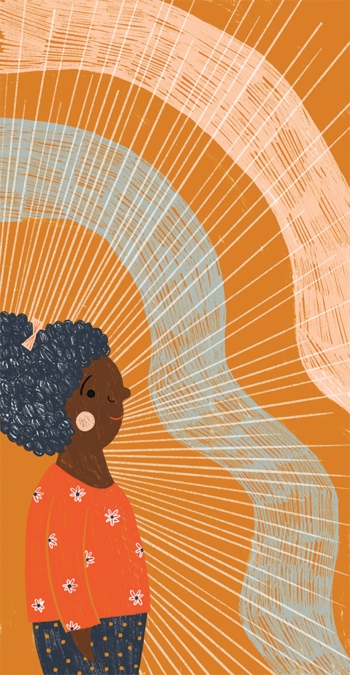
Oglesby agrees. “Students’ needs are first and foremost, and from that vantage point educators are tasked to configure their wants,” she says. “When students, who are children behaving as children do, are off task or causing me a disruption, my initial response is to adjust how I’m facilitating that student or the larger class. In real time, I’m assessing that student’s needs because they precede mine. My lesson is never more important than that of the students’ need for education. The classroom and school experience allows for education to happen.”
Students at Melik’s school have petitioned for systemic change, which includes numerous demands of their school. Staff are working to create equity-focused professional practice goals related to students’ demands. Meanwhile in Philadelphia, the Philly Student Union has been doing powerful work to stop the criminalization of Black students and pushing for police-free schools there. They’ve hosted marches and organized petitions over the years to elevate their messages.
But we should not forget that the onus is still on educators to do this heavy lift. It’s critical that educators reach out to other educators in a school community to urge them to do the same. As a collective, educators can realize their power to challenge the status quo. They can push school board members, superintendents and other school leaders to help shift school culture to an environment free from weaponized whiteness, police intimidation and trauma.
